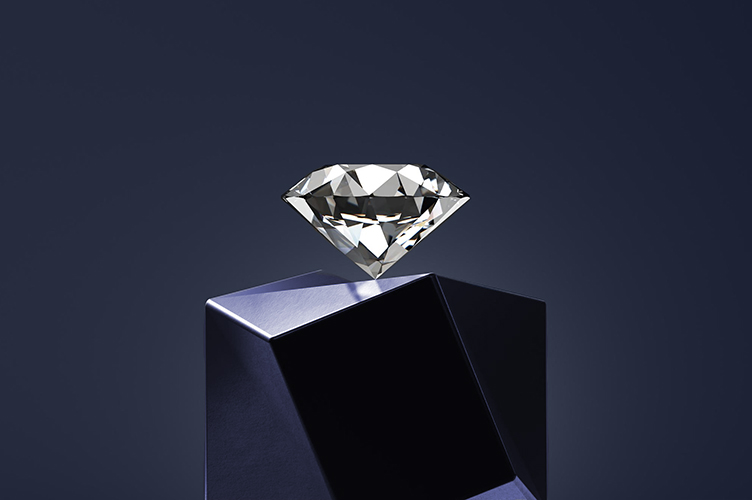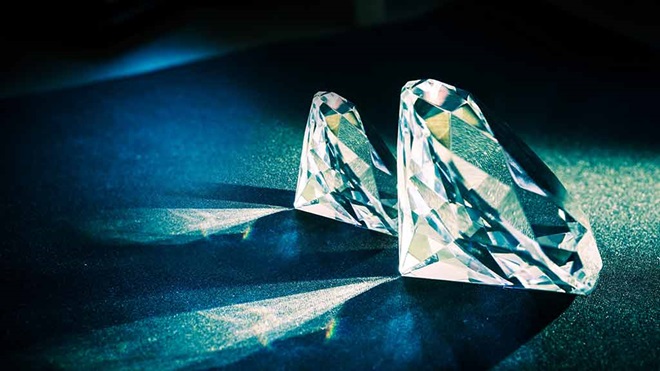Synthetic diamonds, often referred to as lab-grown diamonds, have grown significantly in popularity over recent years. These diamonds are created in controlled laboratory environments using advanced technology that replicates the conditions under which natural diamonds are formed in the Earth’s crust. While they share the same physical, chemical, and optical properties as natural diamonds, synthetic diamonds offer several advantages, such as affordability and ethical sourcing. This article will explore the key aspects of diamantes sinteticos, including their production, benefits, and why they are an attractive choice for consumers today.
What Are Synthetic Diamonds?
Synthetic diamonds are diamonds that are created in a laboratory rather than mined from the Earth. They are made using two primary methods: High Pressure High Temperature (HPHT) and Chemical Vapor Deposition (CVD). Both methods simulate the extreme conditions required for natural diamonds to form, but they do so in a controlled and much quicker process. Synthetic diamonds are made of pure carbon, just like natural diamonds, and exhibit the same hardness, brilliance, and sparkle. The key difference is that synthetic diamonds are produced through human intervention rather than geological processes.
When considering synthetic diamonds, it’s important to note that they are essentially identical to natural diamonds in terms of their appearance and structural properties. However, the main appeal of synthetic diamonds lies in their more accessible price point and the ethical considerations that come with choosing a lab-grown diamond over a mined one.
How Are Synthetic Diamonds Made?
The process of creating synthetic diamonds begins with the selection of carbon as the primary element. In the HPHT method, carbon is subjected to extreme heat and pressure, simulating the conditions found deep within the Earth’s mantle. This results in the crystallization of carbon into diamond structures. On the other hand, the CVD method uses a gas mixture to deposit carbon atoms onto a substrate in a vacuum chamber. These atoms then bond to form diamond crystals.
Both methods require advanced technology and highly controlled environments, but the result is a diamond that is indistinguishable from a natural one in terms of its appearance and properties. These diamonds can be cut, polished, and used in jewelry in exactly the same way as mined diamonds, making them a popular alternative for those seeking a high-quality gemstone at a more affordable price.
The Benefits of Choosing Synthetic Diamonds
One of the most significant benefits of synthetic diamonds is their affordability. Because they are lab-grown and do not require the extensive mining process, they are often much less expensive than natural diamonds of similar size and quality. This price difference allows consumers to purchase larger, higher-quality diamonds for a fraction of the cost of a mined diamond. For many buyers, this makes synthetic diamonds an attractive option, particularly when shopping for engagement rings or other fine jewelry.
Another major benefit of synthetic diamonds is that they are an ethical and environmentally friendly choice. Traditional diamond mining has been associated with harmful environmental practices, such as deforestation, water pollution, and carbon emissions. Additionally, there are concerns about human rights abuses in some mining regions. Synthetic diamonds, however, are produced in a controlled, sustainable environment, ensuring that they have a minimal impact on the planet and its people. For consumers who prioritize ethical sourcing, synthetic diamonds offer peace of mind.
Are Synthetic Diamonds as Good as Natural Diamonds?
One common question surrounding synthetic diamonds is whether they are as good as natural diamonds. The answer is yes—synthetic diamonds are virtually identical to natural diamonds. They share the same chemical composition, crystal structure, and physical properties, including the same hardness (10 on the Mohs scale). This makes them just as durable as natural diamonds and suitable for daily wear in jewelry. They also possess the same brilliance, fire, and sparkle that make diamonds so desirable.
When it comes to appearance, synthetic diamonds are difficult to differentiate from natural diamonds without specialized equipment. In fact, they look and behave in the same way when exposed to light, creating the same dazzling visual effect. Because they are chemically identical, synthetic diamonds are also subject to the same grading standards as natural diamonds, which means they can be evaluated on the same 4Cs—cut, color, clarity, and carat weight.
The Environmental Impact of Synthetic Diamonds
Synthetic diamonds are often considered an environmentally friendly option compared to mined diamonds. The diamond mining industry is known for its negative environmental impact, including habitat destruction, soil erosion, and pollution. Mining also contributes to greenhouse gas emissions, further harming the planet.
In contrast, the production of synthetic diamonds requires fewer natural resources and results in less environmental damage. Lab-grown diamonds can be produced using renewable energy sources, which further reduces their carbon footprint. For consumers concerned about the environmental effects of diamond mining, synthetic diamonds offer a more sustainable and eco-friendly alternative.
Synthetic Diamonds vs. Natural Diamonds: Price Comparison
One of the most compelling reasons people choose synthetic diamonds over natural diamonds is the price difference. Because synthetic diamonds are lab-created, they are typically 20-40% less expensive than their natural counterparts. This price difference can be significant, especially when purchasing larger diamonds. For example, a 1-carat synthetic diamond may cost considerably less than a 1-carat natural diamond of similar quality, allowing buyers to choose a larger or higher-quality stone for the same price.
Despite the cost savings, synthetic diamonds still offer the same aesthetic appeal and durability as natural diamonds. This makes them an excellent choice for budget-conscious consumers who do not want to compromise on quality but are looking for a more affordable option. Whether you’re purchasing an engagement ring or another piece of jewelry, synthetic diamonds provide a way to enjoy the beauty and luxury of diamonds without the hefty price tag.
The Growing Popularity of Synthetic Diamonds
As more consumers become aware of the ethical and environmental concerns surrounding traditional diamond mining, the popularity of synthetic diamonds continues to rise. Many jewelers now offer a wide selection of lab made diamonds, giving consumers more options than ever before. In fact, some people are even opting for synthetic diamonds as a way to invest in high-quality, beautiful jewelry without contributing to the environmental and social issues associated with mining.
Moreover, as the technology behind synthetic diamonds improves, the production process becomes more efficient and cost-effective. This trend suggests that synthetic diamonds will continue to be a prominent choice in the jewelry market in the years to come.
Conclusion: The Future of Synthetic Diamonds
Synthetic diamonds offer a range of benefits, including affordability, ethical sourcing, and environmental sustainability. Whether you’re looking for a stunning engagement ring, a luxurious piece of jewelry, or simply want to invest in a high-quality diamond, synthetic diamonds provide a viable alternative to natural diamonds. As their popularity grows, it’s clear that lab-grown diamonds are becoming a significant part of the diamond market, and they are likely to play a major role in the future of the industry.




